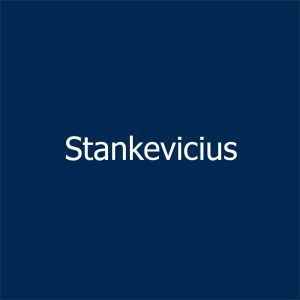A new industrial alliance has emerged within the artificial intelligence sector—one so vast in ambition and so sweeping in influence that it has reignited concerns about monopoly power last seen during the Gilded Age. OpenAI, Nvidia, and Oracle, three of the most dominant players in AI software, hardware, and cloud infrastructure, are collaborating on a massive effort known as Stargate, a next-generation super-computing complex designed to support the development of frontier AI models. While the companies frame the project as a necessary and inevitable response to the escalating demands of artificial intelligence, a leading Yale antitrust expert argues that the alliance may constitute one of the clearest violations of U.S. competition law in more than a century.
The essence of the concern centers not on the technological ambition of Stargate but on the unprecedented concentration of economic power it represents. Since the passage of the Sherman Antitrust Act in 1890, American law has consistently challenged efforts by powerful firms to consolidate essential inputs, restrict access, or form alliances that give them disproportionate control over emerging industries. The collaboration among OpenAI, Nvidia, and Oracle, critics claim, does all three simultaneously. In uniting the world’s most influential AI research lab with the world’s dominant chipmaker and one of the fastest-growing AI cloud providers, Stargate threatens to become the defining bottleneck for the entire AI economy.
To understand the scale of this concern, it is essential to grasp the central role each company plays in its respective domain. Nvidia controls the global supply of advanced AI processors to such a degree that its GPUs are no longer optional but required for training any model of meaningful scale. OpenAI, for its part, sets benchmarks for frontier AI capabilities, shaping industry expectations and dictating the level of compute required to compete. Oracle, newly ascendant in the AI cloud race, has built infrastructure optimized for the immense bandwidth and memory demands of large-scale model training. Individually, each company holds a strategic position. Collectively, they form an integrated pipeline that could define—and potentially restrict—the future of artificial intelligence.
Supporters of the partnership argue that the sheer cost and complexity of training state-of-the-art models makes coordination inevitable. According to this view, the next generation of AI systems is so computationally demanding that only large-scale collaboration can deliver the required infrastructure. Centralizing compute may reduce inefficiencies, enhance safety oversight, and ensure that the most advanced models are built within predictable and well-resourced frameworks. From this perspective, Stargate is not an exercise in consolidation but a pragmatic solution to the growing demands of AI’s rapid evolution.
Yet antitrust scholars say that necessity is not a legal defense. The central question, as applied by courts over the last 135 years, is whether a collaboration creates or strengthens barriers to competition. In the case of Stargate, the answer may be yes. A single alliance that controls essential chips, cloud access, and model-training resources could become the de facto infrastructure for frontier AI. Competitors—whether emerging research labs, smaller cloud providers, or even other Big Tech firms—would face near-insurmountable obstacles. Without access to Nvidia’s chips, OpenAI’s model standards, or Oracle’s optimized servers, they would struggle to train systems that come close in scale or sophistication. What begins as an engineering partnership could evolve into a structural choke point through which the future of AI must pass.
Historical parallels underscore the gravity of the issue. The consolidation of Standard Oil across extraction, refining, and distribution provides one analogy. AT&T’s control over telecommunications infrastructure provides another. More recently, the Microsoft antitrust case demonstrated how bundling essential components—in that case, an operating system and a browser—can distort market conditions even without explicit exclusionary contracts. Stargate echoes each of these cases in different ways. It unites complementary monopolistic advantages into a fused ecosystem, one that may determine not only who participates in the AI economy but how innovation unfolds within it.
The deeper question raised by the Stargate alliance, however, extends beyond legal definitions. It concerns the relationship between technological power and democratic oversight. Artificial intelligence is widely expected to shape economic productivity, labor markets, national security, and social structures for decades to come. If access to advanced compute becomes centralized in the hands of a few private entities, the direction of AI development could be guided by the incentives, priorities, and governance structures of corporations rather than by public interest or open competition. In such a world, innovation becomes less a reflection of collective progress and more a function of consolidated corporate strategies.
Regulators now face a difficult dilemma: whether to intervene early, potentially slowing the pace of AI advancement, or to allow the collaboration to proceed and risk creating a structural monopoly that will be nearly impossible to unwind. The decision will likely shape the landscape of artificial intelligence for the next generation. It will determine not only who benefits from the coming wave of technological transformation but who controls the infrastructure behind it.
The controversy surrounding Stargate may be the first major antitrust test of the AI era—a moment when the nation must revisit principles established in 1890 and decide whether they remain sufficient to govern the technologies of 2030 and beyond. Whether the collaboration ultimately stands, evolves, or is dismantled, it has already forced a necessary reckoning. The future of AI cannot be separated from questions of power, access, and accountability. As the world moves toward a new epoch of computational capability, the challenge is not simply to build the future but to ensure that it remains open and competitive, rather than closed and controlled.
















